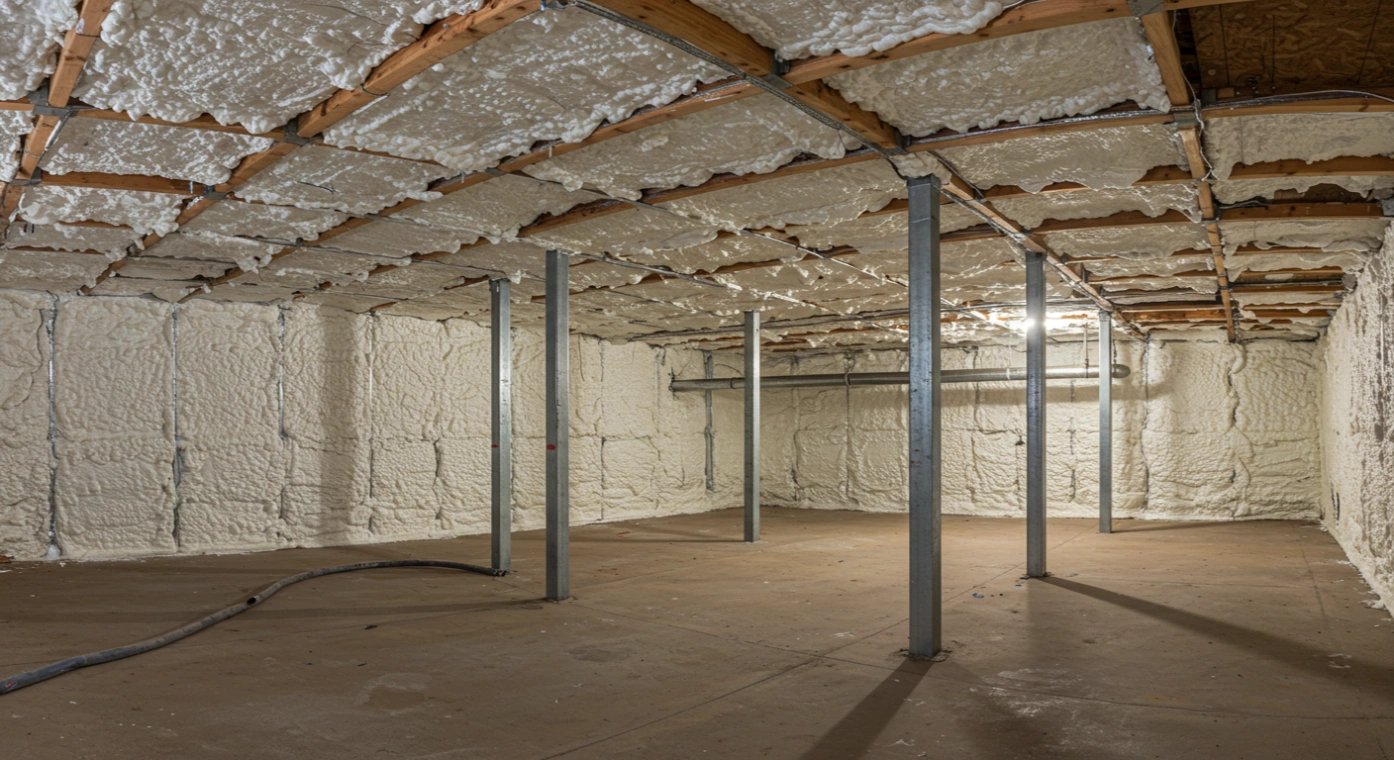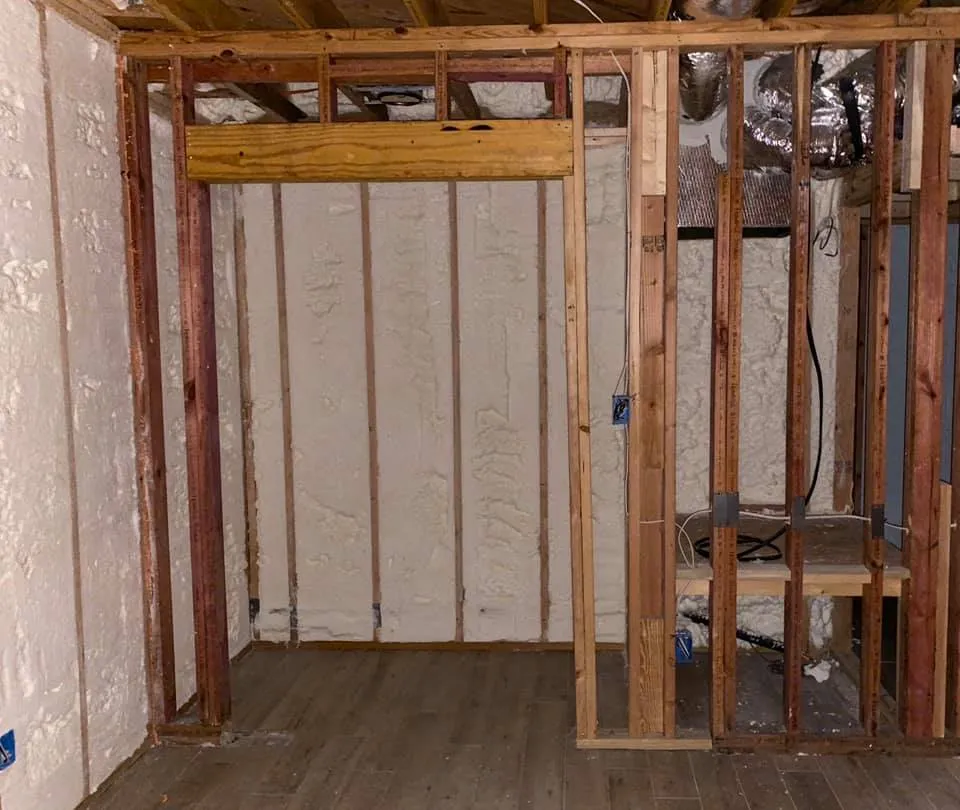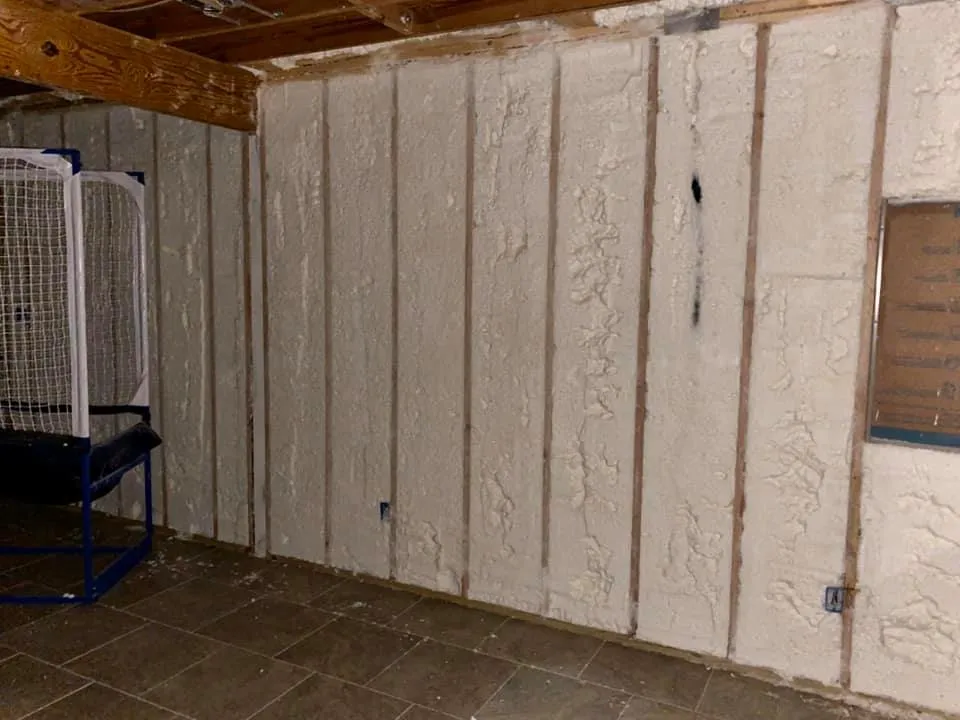Spray foam insulation is often the better choice for crawlspaces when air sealing, moisture control, and long-term energy efficiency are priorities. Fiberglass may suffice in dry, ventilated environments, but it lacks the ability to create an air or vapor barrier. In areas with humidity, ground moisture, or temperature fluctuations—like Central Texas—spray foam offers greater reliability.
For crawlspaces exposed to groundwater vapor, or where rodents and pests are an issue, fiberglass tends to degrade, sag, or trap moisture. Spray foam adheres directly to surfaces, deters pests, and maintains its shape.
This article outlines when and why spray foam is the more durable, effective solution for crawlspaces. Based on field installations and real-world performance, the information reflects practical experience with both insulation types across varied residential conditions.
How Spray Foam Compares to Fiberglass in Crawlspaces
| Feature | Spray Foam Insulation | Fiberglass Batt Insulation |
|---|---|---|
| Air Sealing | Yes (seals gaps, prevents drafts) | No (allows air movement) |
| Moisture Resistance | High (closed cell acts as vapor barrier) | Low (absorbs moisture) |
| Mold Resistance | High (non-organic, does not support mold growth) | Low (can hold moisture and grow mold) |
| Pest Resistance | Moderate to High (not a nesting site) | Low (easily displaced by rodents) |
| Longevity | 20+ years with minimal degradation | 10-15 years with performance decline |
| Installation Surface Adherence | Yes (applied directly to subfloor or walls) | No (requires mechanical support) |
| R-Value per Inch | 6.0-7.0 (closed cell) / 3.5-4.0 (open cell) | 2.9-3.8 |
| Cost (Initial) | Higher | Lower |
| Cost (Over Lifetime) | Lower due to reduced energy loss | Higher due to maintenance and replacement |
| Performance in Humid Regions | Reliable | Inconsistent |
Technical Specifications and Suitability
| Specification | Spray Foam (Closed Cell) | Spray Foam (Open Cell) | Fiberglass Batt |
|---|---|---|---|
| R-Value per Inch | 6.5-7.0 | 3.6-4.0 | 2.9-3.8 |
| Water Absorption | < 2% | ~5% | > 20% |
| Air Impermeability | Yes | Partial | No |
| Vapor Barrier | Yes | No | No |
| Application in Crawlspaces | Optimal | Conditional | Limited |
Bonus Tip: Closed cell spray foam adds structural rigidity to crawlspace subfloors and joists, helping stabilize older homes.
Region-Specific Factors in Central Texas
Central Texas presents high humidity levels, ground vapor intrusion, and temperature swings. These conditions increase the risk of:
- Mold development on fiberglass batts
- Rodent intrusion and nesting in loose materials
- Insulation sagging or falling in vented crawlspaces
Closed cell spray foam performs well in these environments by:
- Creating a vapor barrier against ground moisture
- Withstanding high heat without sagging
- Preventing unfiltered air from entering conditioned space
Fiberglass fails to consistently meet these needs and often requires replacement within a decade due to sagging or contamination.
Things to Consider Before Making a Decision
- Ventilation Type: Vented crawlspaces benefit more from spray foam, as air and moisture sealing become critical.
- Existing Moisture Problems: Any standing water, high humidity, or previous mold history favors a non-absorbent material like closed cell spray foam.
- Pest History: If rodents or insects have accessed fiberglass insulation in the past, switching to spray foam eliminates nesting areas.
- Budget vs. Performance: While fiberglass is less expensive upfront, long-term reliability and energy savings make spray foam more cost-effective.
- Local Building Codes: Some jurisdictions mandate vapor barriers in crawlspaces, which closed cell spray foam inherently provides.
Bonus Tip: Pairing closed cell foam with a crawlspace vapor barrier and dehumidifier can eliminate nearly all moisture-related failures.
We Provide the Right Insulation for Crawlspaces
Stellrr offers a range of insulation solutions designed to fit the specific needs of crawlspaces in Central Texas homes.
- Closed Cell Insulation: Best for sealing out air, vapor, and water in high-risk crawlspaces.
- Open Cell Insulation: A lighter-density option suitable for protected crawlspaces with no moisture risk.
- Crawlspace Insulation: Includes removal of old materials, preparation, and custom application based on subfloor and wall type.
- Insulation Removal: Safe extraction of moldy, sagging, or pest-contaminated fiberglass from crawlspaces.
Common Questions About Choosing Crawlspace Insulation
How long does spray foam last in a crawlspace?
Spray foam can last over 20 years with minimal degradation when applied correctly.
Can I install fiberglass if I already have moisture issues?
No. Fiberglass absorbs moisture and can worsen mold or rot problems.
What type of spray foam should be used under the house?
Closed cell spray foam is preferred under homes due to its vapor barrier and strength.
Is spray foam safe in crawlspaces?
Yes. Once cured, it is inert and does not emit VOCs or fumes. Professional installation ensures safety.
Get Expert Insulation Guidance
To determine the right crawlspace insulation for your home, speak with an expert who understands the materials and how they perform in your region.
Contact Stellrr today:
Email: info@stellrr.com
Phone: (512) 710-2839
FAQs
How can I tell if my crawlspace insulation is failing?
Look for sagging batts, visible mold, musty smells, or high indoor humidity. These are signs the material is compromised.
Can I mix insulation types in my crawlspace?
Mixing materials often leads to uneven performance. Consistency helps control vapor and temperature more effectively.
Will spray foam block access to pipes or wires?
No. A professional application accounts for future access points and ensures maintainability.
Do I need to remove old fiberglass before spraying foam?
Yes. Existing insulation must be removed to allow foam adhesion and prevent mold being trapped underneath.
How does spray foam affect home energy bills?
It typically reduces crawlspace-related energy loss by sealing air leaks and preventing temperature exchange.





